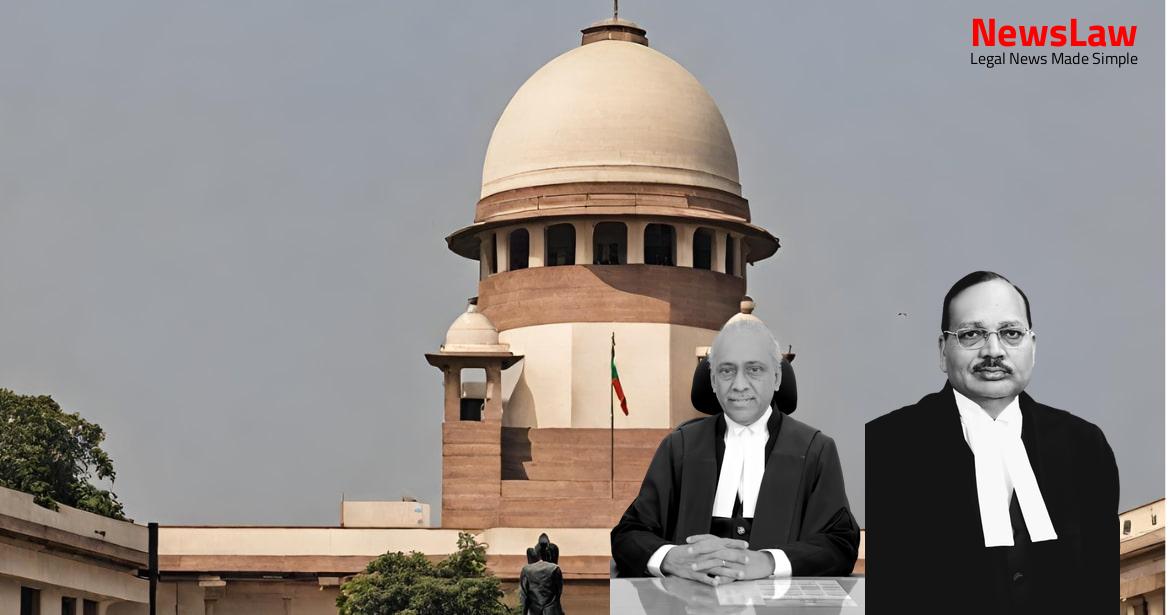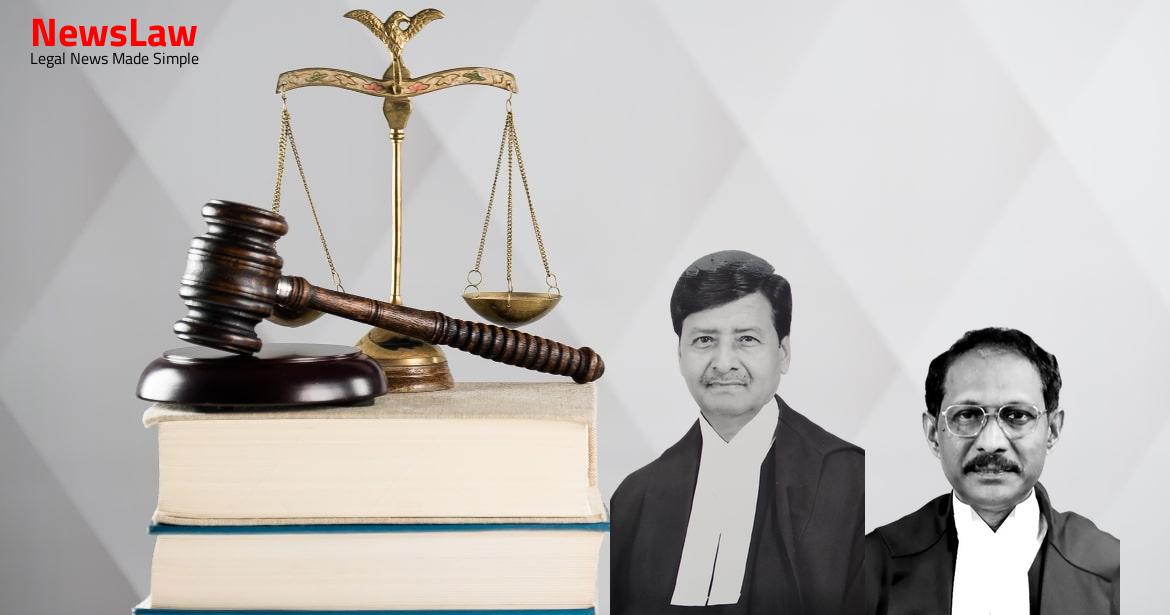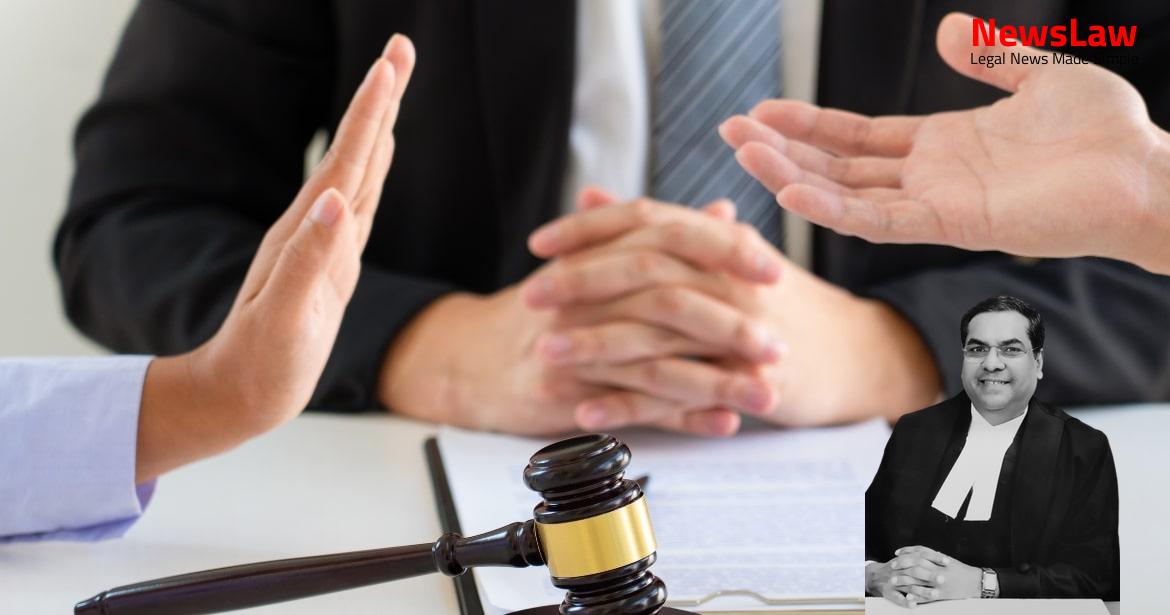Explore the complex legal analysis surrounding the case of abetment to suicide in this summary. The court’s detailed scrutiny of the evidence and application of legal principles sheds light on the intricacies of such sensitive matters. Dive into the essence of abetment, instigation, and intent in relation to the tragic act of suicide. #LegalAnalysis #Abetment #SuicideCase
Facts
- The accused appellant approached the High Court seeking quashing of the charge-sheet and proceedings of the criminal case against him.
- The High Court rejected the application under Section 482 of the CrPC filed by the accused appellant.
- The suicide note written by the deceased is the sole basis of the charge-sheet against the accused appellant.
- The suicide note mentioned the deceased’s sacrifices due to the harassment he faced from officials in Kannauj, leading to his decision to end his life.
- The charge-sheet was filed for offenses under Section 306 IPC and Section 3(2)(v) of the SC/ST Act based on the suicide note.
- The deceased’s body was discovered in his home in Fatehgarh, where he had taken his life by consuming a poisonous substance.
Also Read: Analysis of Dying Declaration in a Criminal Case
Arguments
- The deceased was bothered by the pressure of working in two districts and took the extreme step of ending his life.
- The suicide note indicates that the deceased was frustrated by the style of functioning of the appellant and another official.
- The deceased felt he had no option but to end his life due to the pressures he faced.
- The High Court’s well-reasoned order refusing to interfere and quash the criminal case against the appellant should not be overturned.
- The suicide note contains allegations that constitute the necessary elements of abetment to suicide.
- The appellant and Shashidar Dwivedi, the CDO, are accused of harassing and humiliating the deceased to the point where he felt compelled to take his own life.
Also Read: Analysis of Burden of Proof in Recovery Case
Analysis
- The suicide note failed to establish any act or omission on the part of the accused appellant which could attribute abetment as per Section 107 IPC.
- The trial court and the High Court overlooked the essence of this aspect in their judgments.
- The suicide note did not indicate any harm caused by the appellant or any responsibility for delaying salary payments to the deceased.
- The complaint against the appellant was based solely on the suicide note, lacking any other allegations of harassment.
- The deceased expressed frustration with work conditions and unrelated factors in the suicide note, pointing towards his dissatisfaction.
- The appellant’s connection to the offense under Section 306 IPC was found to be unsubstantiated, and the charges should have been quashed.
- The Court should be extremely careful in assessing the facts and circumstances of each case and the evidence presented in the trial
- No straitjacket formula can be laid down for dealing with cases of abetment of suicide
- Abetment involves a mental process of instigating or aiding a person in doing an act, requiring intention and a positive act on the part of the accused
- Conviction cannot be sustained without a positive act of instigation or aid in committing suicide
- Each person’s suicidability pattern is different, and instigation does not necessarily require specific words or actions
- Recent judgments have emphasized the need for clear mens rea and a direct act leading to suicide for conviction under Section 306 IPC
- Cases where no prima facie case is made out against the accused should be quashed to prevent abuse of the court process
- Allegations should be relevant and grounded for proceedings to continue, as seen in the case of Madan Mohan Singh v. State of Gujarat
- The hypersensitivity of an individual to common life stressors should be considered before attributing abetment of suicide to the accused
- The judgment in State of Haryana v. Bhajan Lal outlines situations where powers under Section 482 CrPC can be exercised to prevent abuse of court processes
- Each case of abetment must be decided based on its own facts and circumstances, with a focus on the individual’s self-esteem and self-respect
- Section 107 of the Indian Penal Code defines ‘Abetment of a thing’.
- Abetment can occur through instigation, conspiracy, or intentional aid.
- Explanation 2 of Section 107 clarifies that facilitating an act to aid its commission constitutes abetment.
- The concept of abetment is further illustrated in Section 306 of the IPC regarding abetment of suicide.
- Suicide is self-killing, and abetting suicide carries a punishment of imprisonment and fine.
- Attempt to suicide is an offense under Section 309 of the IPC in India.
- Abetment of a thing involves instigation, conspiracy, and intentional aid as per Section 107 of the Code.
- Ingredients of the offence of abetment to commit suicide are not made out from the chargesheet.
- Prosecution of the appellant for the offences punishable under Section 306 IPC and Section 3(2)(v) of the SC/ST Act is deemed grossly illegal.
- Investigating agency initially proposed a closure report after thorough investigation.
- Facts of the case are similar to the Netai Dutta case.
- Apprehensions expressed in the suicide note are not sufficient to attribute abetment to the appellant.
- No justifiable ground to permit prosecution of the appellant for the mentioned offences.
Also Read: Presumption of Genuine Endorsements in Cheque Case
Decision
- The appeal is allowed, and the criminal proceedings against the appellant are quashed.
- The appellant is cleared of the charges under Section 306 IPC and Section 3(2)(v) of the SC/ST Act.
- The impugned order by the High Court is set aside.
- Any pending applications related to the case are disposed of.
Case Title: PRABHAT KUMAR MISHRA @ PRABHAT MISHRA Vs. THE STATE OF U.P. (2024 INSC 172)
Case Number: Crl.A. No.-001397-001397 / 2024



